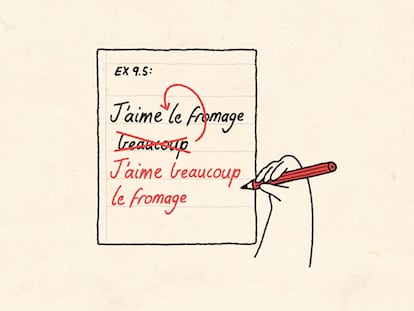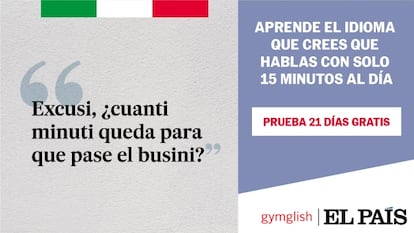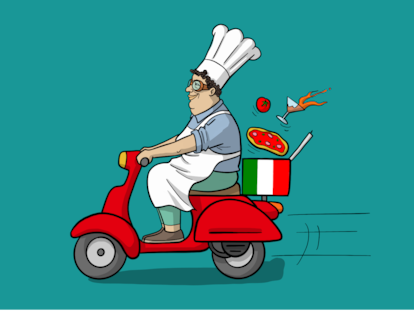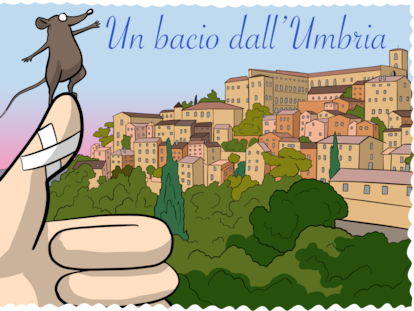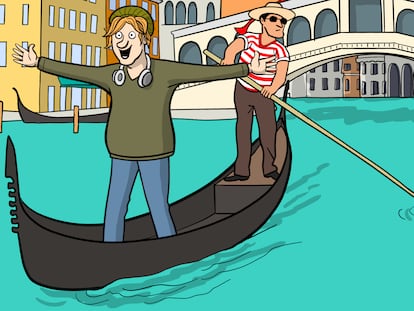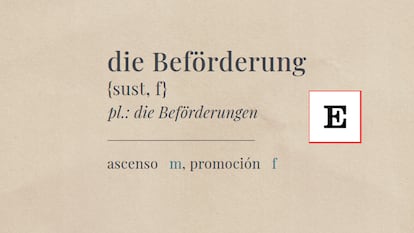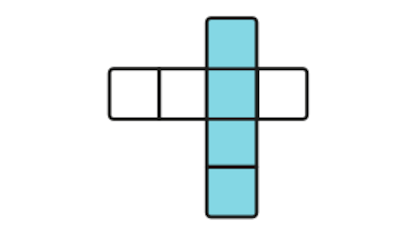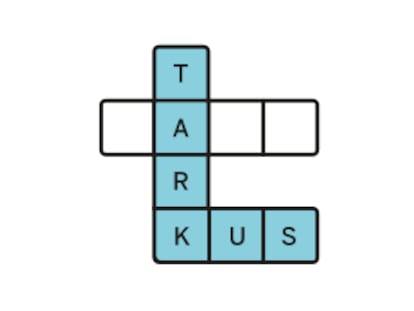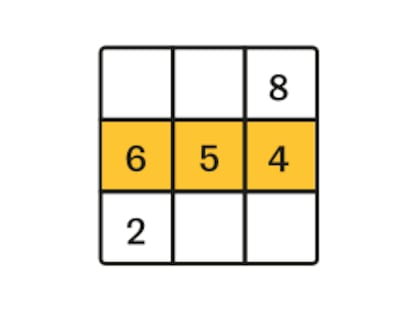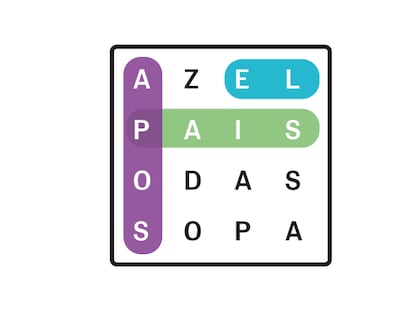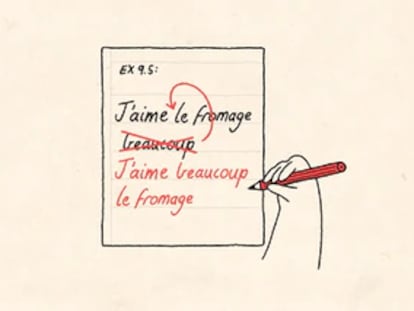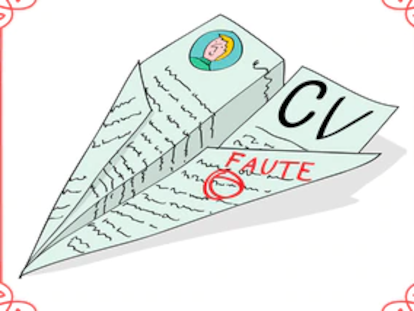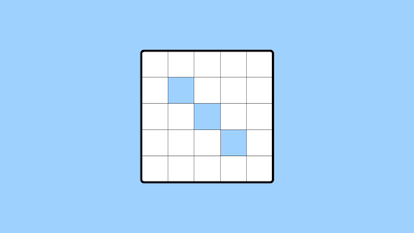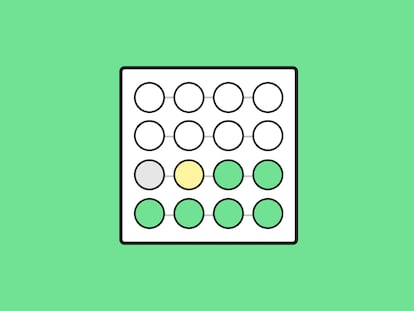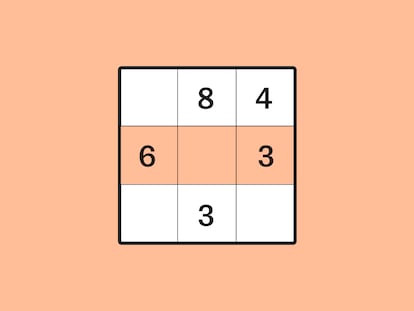Is this the first ‘Caravaggio’ in history?
The renowned expert Gianni Papi claims to have found the Italian master’s first painting, the original of ‘Boy Peeling Fruit’
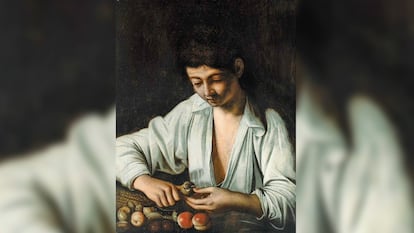

In the autumn of 1592, Caravaggio, an unknown and, at the time, still untalented painter, arrived in Rome at the age of 20. Eight years later, the Jubilee of 1600 was to be celebrated, and the city, with some 2,000 artists and a population of 100,000, was preparing for the event. New churches were being built, old palaces restored. But complaints about the poverty of painters were constant.
Caravaggio, anything but a precocious prodigy, had to survive as best he could. He moved from one low-level studio to the next. He copied other people’s work and created cheap devotional images. He was a modest artist from Lombardy, drawing fruit and flowers. Thanks to family connections, he found lodging in the Palazzo Colonna.
One of his contemporary biographers, Giulio Mancini (1558-1630), recounted in Considerations on Painting that Caravaggio painted at market price — which proved his financial hardship — “a boy screaming because he has been bitten by a lizard he is holding in his hand, a boy peeling a pear with a knife, and the portrait of an innkeeper who had given him lodging.”
Despite dying at just 39, the master’s oeuvre seems inexhaustible. Every so often, a new painting attributed to the genius emerges. It is estimated that he made around 60 canvases, although he only ever signed The Beheading of the Baptist, in Malta, so controversy always arises when a new candidate appears. The Ecce Homo discovered in Madrid in 2021 was certified by the expert Maria Christina Terzaghi, who also claims to have found the original version of Youth with a Jug of Roses in Paris, of which at least five versions are known. Caravaggio, like many artists past and present, repainted the same subject several times. It was a matter of survival.
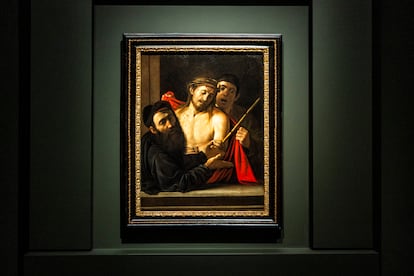
Surprisingly, last week, Gianni Papi—one of the world’s leading experts on the artist—announced the discovery of what he believes to be the earliest known painting by the genius: Boy Peeling Fruit (Ragazzo che monda un frutto). The work, an oil on canvas measuring 66 x 51.5 centimeters, was acquired by a private individual in 2024 at a northern European auction as a supposed “Caravaggio copy” and loaned to Papi for study.
“I don’t exclude that the painting could have been painted by the master before his arrival in Rome and that he carried it with him as a kind of calling card. The master, who was born in 1571, could have been around 24 years old at that time,” explains the expert.
The initial doubts were evident. There are about 10 known copies. And it has not yet been possible to trace the painting’s origin. However, Giani has no doubts, having subjected the canvas to an X-ray and a reflectography study. But what did he see?
“The quality of some of the better-preserved pieces, such as the shirt, the hands, and the still life [a recurring theme when the Lombard artist worked in the Knight of Arpino’s workshop], indicate a high level of skill, and gave me hope.”
He adds: “However, there was one essential element in establishing authorship, above the rest of the versions. It appears in the X-ray of the work. A dark addition is clearly visible at the bottom, in the area that insinuates itself between the child’s hands and the fruit and reaches the shirt.” It is easy to recognize, in the dark shadow, a small dog with its nose turned upwards, towards the child’s face, its mouth half-open.
This means the canvas was reused. There are areas that resemble a landscape, and the support was cut on at least three sides to adapt it to the painter’s intentions.
“Perhaps the dog was part of a previous composition. It could have been the result of Caravaggio’s initial idea, and it brings to mind the allegorical image of Happiness: the black dog, Cornacchia, which the painter’s biographer, Giovanni Baglione (1563-1643), claimed was inseparable from Caravaggio,” explains Gianni Papi.
It is the upturned nose, therefore, that holds the key to the originality of this work. Caravaggio considered partially utilizing this dark area, painted previously, to create the two small, unlit areas on the shirt, which, according to the painter’s intention, should be the shadows of the hand and the fruit, which, at first glance, seem somewhat forced, perhaps due to his inexperience. “Now we understand why those same shadow areas are repeated in the rest of the different variations and what their origin is,” Papi argues.
This youthful productivity follows the logic imposed by poverty. Moving from one studio to another, perhaps, given his character, without ever finding a place of his own, Caravaggio “settled with a Sicilian painter who had a shop full of crude works,” writes art critic Giovanni Pietro Bellori (1613-1696) in The Lives of Modern Painters, Sculptors, and Architects.
He adds: “Because he was so needy and desperate, he painted portraits for four pence each, and did three a day.” These were canvases generally acquired by noble patrons and men of letters. “The Mondafrutto (fruit peeler) recovers iconographies that Caravaggio may have seen in Lombardy or Veneto, although there is no precise precedent. Perhaps, for Rome, it was a novelty and that is why it was so widely replicated,” the Italian expert emphasizes.
Another, later, autographed version is known from Hampton Court, in the British royal collections, which he may well have sold to survive. There would, therefore, be two versions of Boy Peeling Fruit. During the 14 years he spent in Rome, Caravaggio was able to overcome the mediocrity of an apprentice and embrace genius.
Sign up for our weekly newsletter to get more English-language news coverage from EL PAÍS USA Edition
Tu suscripción se está usando en otro dispositivo
¿Quieres añadir otro usuario a tu suscripción?
Si continúas leyendo en este dispositivo, no se podrá leer en el otro.
FlechaTu suscripción se está usando en otro dispositivo y solo puedes acceder a EL PAÍS desde un dispositivo a la vez.
Si quieres compartir tu cuenta, cambia tu suscripción a la modalidad Premium, así podrás añadir otro usuario. Cada uno accederá con su propia cuenta de email, lo que os permitirá personalizar vuestra experiencia en EL PAÍS.
¿Tienes una suscripción de empresa? Accede aquí para contratar más cuentas.
En el caso de no saber quién está usando tu cuenta, te recomendamos cambiar tu contraseña aquí.
Si decides continuar compartiendo tu cuenta, este mensaje se mostrará en tu dispositivo y en el de la otra persona que está usando tu cuenta de forma indefinida, afectando a tu experiencia de lectura. Puedes consultar aquí los términos y condiciones de la suscripción digital.
More information
Archived In
Últimas noticias
Welcome to the post-religion era: The idea of Christianity as the absolute truth has become obsolete
‘I thought you would like it’: The risky sexual practice popularized by TV shows and TikTok
The digitalization of tourism: ‘They promise experiences and gave us the worst possible one’
Mexican peso defies uncertainty with forecasts of a new period of stability in 2026
Most viewed
- Sinaloa Cartel war is taking its toll on Los Chapitos
- Oona Chaplin: ‘I told James Cameron that I was living in a treehouse and starting a permaculture project with a friend’
- Reinhard Genzel, Nobel laureate in physics: ‘One-minute videos will never give you the truth’
- Why the price of coffee has skyrocketed: from Brazilian plantations to specialty coffee houses
- Silver prices are going crazy: This is what’s fueling the rally











